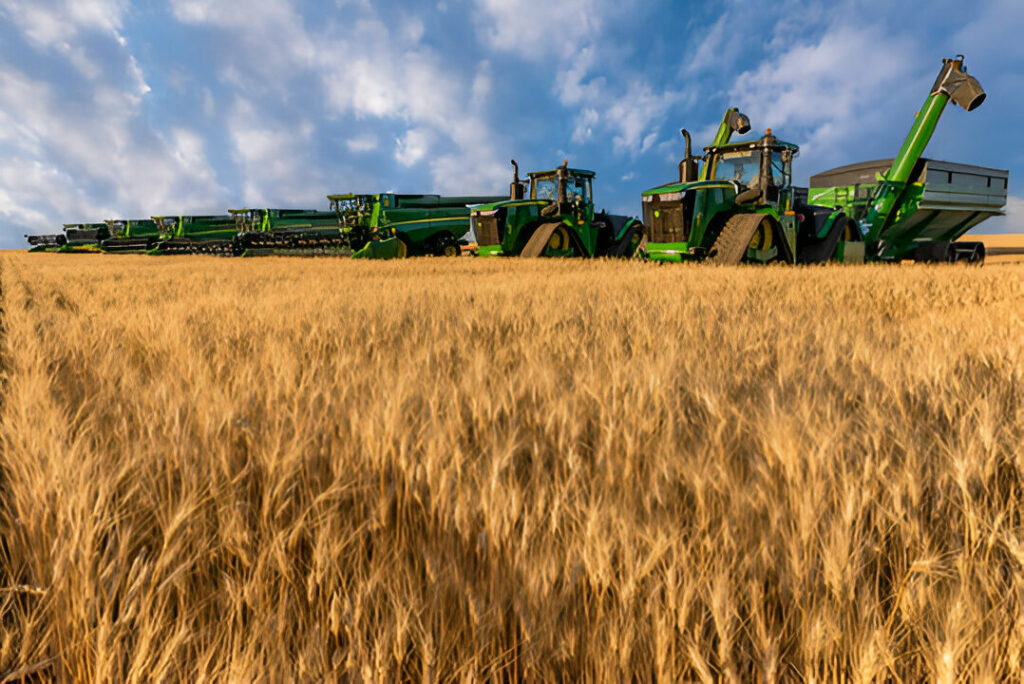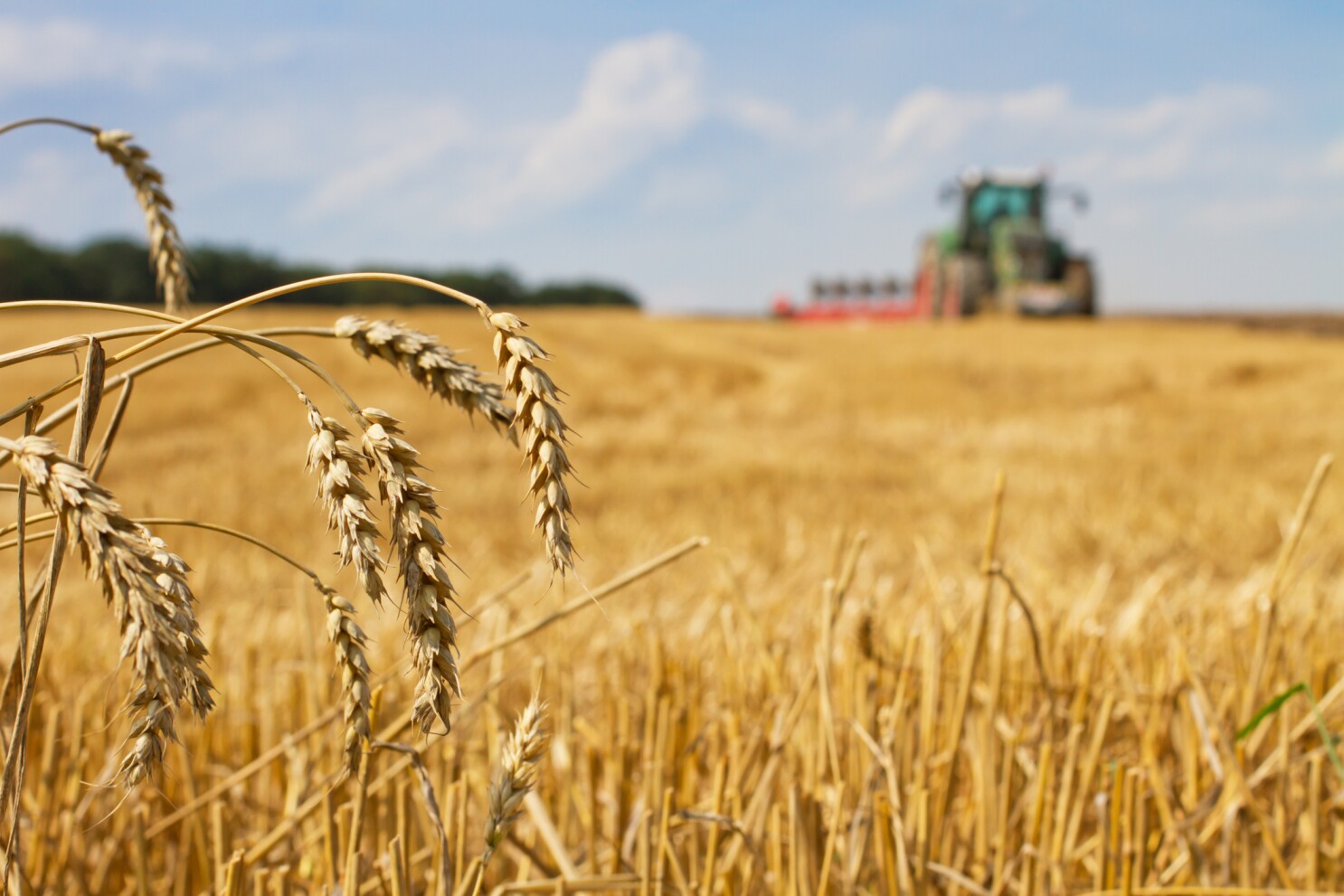A combine farm machine represents one of the most significant investments for agricultural operations today, with prices running more than half a million dollars for a single unit. Despite this substantial cost, large farming operations are increasingly turning to John Deere’s combine harvesters in 2025, as the company maintains a strong market position with a current stock price around $481 and a market capitalization of approximately $130-131 billion.
The decision to invest in a premium combine farming machine makes economic sense when considering global food challenges. In fact, the world’s population is expected to grow to around 9.8 billion by 2050, meaning farmers need to produce twice the current amount of food. How a combine harvester works has evolved significantly, with John Deere’s models collecting and processing tens of thousands of data values per second. Additionally, the average combine price must be weighed against its economic lifespan, which research shows remains consistent at about 10 years when used 300-450 hours annually.
In this article, we’ll explore why large-scale operations are switching to John Deere combines specifically, even as U.S. farm income is forecast to fall for a second consecutive year in 2024. We’ll examine the automation advantages, key adoption factors, and important considerations before making this significant investment in your farming operation.
Why automation is changing the face of farming
Automation represents a fundamental shift in agricultural practices as farmers confront critical challenges of our time. Labor shortages have become a pressing concern, with over 50% of farmers reporting impacts on their operations. Modern combine farm machines are evolving beyond simple harvesting tools into sophisticated data hubs that collect tens of thousands of values per second to optimize performance.
The economic case for automation is compelling. Precision spraying technologies can reduce herbicide costs by up to 80%, creating a value of approximately $30 per acre. Moreover, autonomous equipment enables one worker to manage multiple machines, generating savings of $15-$20 per acre on US corn farms. For specialty crops, the same scenario could deliver labor savings of about $30 per acre.
Autonomous combine farming machines are tackling environmental challenges through precise resource application. Automated systems can reduce fertilizer usage by more than 60%, which is crucial since fertilizers account for over half of all greenhouse gas emissions in farming. Furthermore, fertilizer application robots can save more than 93 million gallons of starter fertilizer annually across US corn farms alone.
Today’s combines have transformed from simple mechanical devices into complex systems with advanced electronics that enhance performance and precision. These machines can harvest up to 30 acres per hour with just one operator, while collecting valuable data that contributes to long-term productivity strategies.
John Deere has been at the forefront of this transformation, developing autonomous tractors that work tirelessly during critical windows. As the company states, “It’s like an extra pair of hands” that’s “never late” and “won’t mind working all night”. Their autonomous machinery uses a neural network processing images from 16 advanced cameras that provide 360-degree vision, evaluating every pixel in about 100 milliseconds.
Although only 27% of U.S. farms currently use precision agriculture practices, the trend is accelerating as farmers recognize how a combine harvester works more efficiently through automation, offsetting the average combine price through significant operational savings.
Key reasons large farms are adopting John Deere combines

Large farms across the country are investing in John Deere combine machines primarily due to their advanced automation and integrated technology systems. These sophisticated machines come equipped with Connected Support™ technology that senses potential issues and alerts both the operator and dealer when concerns arise. This proactive approach to maintenance helps prevent costly downtime during critical harvest windows.
The G5 Advanced Package bundles five advanced guidance and automation technologies into an annual license, providing farmers with technology that improves over time through automatic feature updates. Consequently, operators gain access to cutting-edge capabilities without needing to purchase entirely new equipment.
One standout feature driving adoption is the Harvest Settings Automation included in Premium and Ultimate Technology Packages. Farmers simply set acceptable limits for grain loss, foreign material, and broken grain through the G5Plus Display. The combine then automatically adjusts itself to deliver the performance specified. This eliminates the need to manually adjust rotor speed, fan speed, concave, chaffer, and sieve clearances.
Notably, the S7 combines utilize two forward, cab-mounted stereo cameras that constantly measure crop height and volume, while pre-harvest satellite field images generate predictive field maps. The machine processes this data to automatically adjust ground speed before entering changing crop conditions, essentially maintaining optimal performance even as field conditions vary.
In-field data sharing represents another compelling reason for adoption, allowing harvest summary information and guidance lines to be shared across multiple operators. Indeed, this connectivity extends to the John Deere Operations Center™, giving farmers a single, secure place to monitor, organize, analyze, and share data 24/7.
The economic benefits are substantial. Precision agriculture technologies deliver an average return on investment of 1.75% according to USDA research. Furthermore, studies show precision agriculture practices can reduce nitrogen application by an average of 14% while maintaining or increasing yields.
Challenges and considerations before switching
Investing in a new combine farm machine requires careful evaluation beyond the impressive technological benefits. First, the financial commitment is substantial—a new John Deere X9 1100 combine costs between $900,000 and $1,000,000, while used models range from $670,000 to $750,000. These prices fluctuate based on hours run, condition, included options, and available attachments.
Repair access represents a significant consideration. According to a 2023 U.S. Public Interest Research Group report, farmers lose approximately $3 billion annually to tractor downtime and pay an additional $1.2 billion in excess repair costs because they must rely on dealerships. Although John Deere provides a customer version of their diagnostic software, it costs over $3,000 per year and has substantial limitations compared to the dealership version.
Recently, John Deere signed an agreement with the American Farm Bureau Federation committing to provide “timely availability” of “tools, software and documentation” for repairs. Nevertheless, the Federal Trade Commission filed a lawsuit in January 2024 claiming the company falls short on these promises.
Operational expenses extend well beyond the purchase price. Farm owners face ongoing costs including:
- Fuel consumption (2-2.5 liters per ton of grain)
- Maintenance (varies up to 20% between models)
- Repairs (especially for older machines)
- Labor costs
Together, these can total $13.50 to $20.00 per acre.
Staff training and adoption present another hurdle. Without proper implementation, expensive technology may not deliver its promised value. Successful farms develop a roll-out plan, bring staff on board by demonstrating benefits, invest in necessary training, and continuously evaluate how the technology is being used.
Finally, farm size, crop diversity, financial situation, and technological needs all influence whether John Deere combines make economic sense for your operation. Consider that combines typically see usage only about 7% of the year, making utilization rate a critical factor in justifying the average combine price.
Conclusion
John Deere combine machines undoubtedly represent a significant investment for agricultural operations. Nevertheless, their advanced automation capabilities, data-driven insights, and long-term operational savings make them increasingly attractive to large-scale farmers facing global food production challenges.
The economic equation ultimately depends on individual farm circumstances. Farmers must weigh the substantial upfront costs against potential returns through reduced labor expenses, decreased resource usage, and improved harvest efficiency. Additionally, farmers should consider the ongoing expenses beyond the initial purchase price, including fuel, maintenance, repairs, and staff training.
Repair access remains a contentious issue despite recent agreements between John Deere and farming organizations. Therefore, prospective buyers should thoroughly evaluate their ability to maintain these sophisticated machines before committing to a purchase.
Large farms certainly benefit from automation technologies that address labor shortages while optimizing resource use. John Deere’s systems offer particular advantages through proactive maintenance alerts, automatic feature updates, and intelligent harvest settings that adjust to changing field conditions.
The decision to invest in these premium machines requires careful consideration of farm size, crop diversity, financial situation, and technological needs. Farmers who plan strategically for implementation and staff training will likely see the greatest return on their investment. Though challenges exist, the technological capabilities of modern John Deere combines position forward-thinking agricultural operations for success in meeting growing global food demands through 2025 and beyond.

